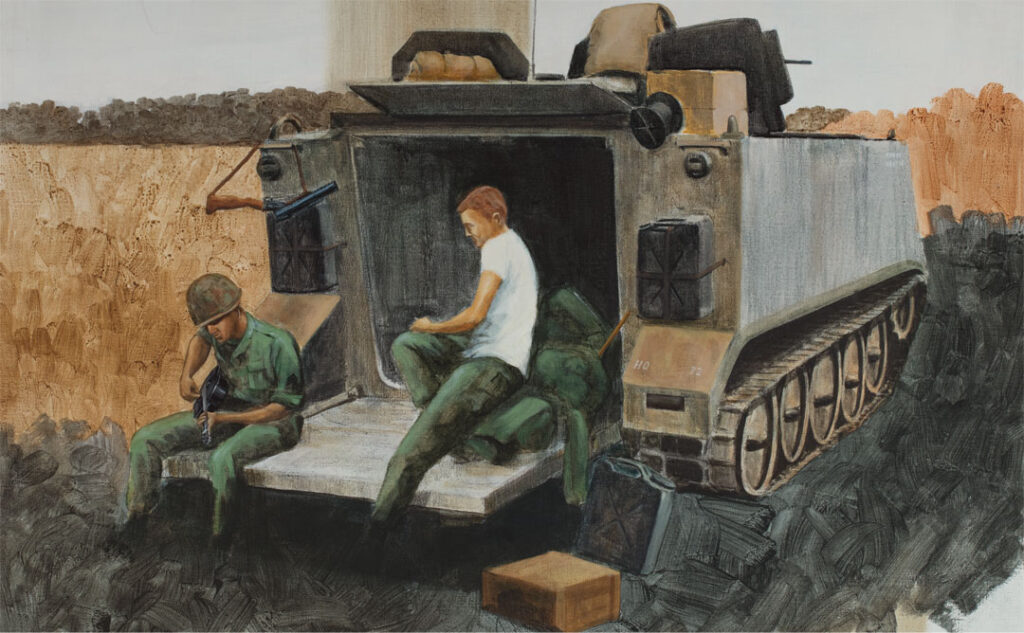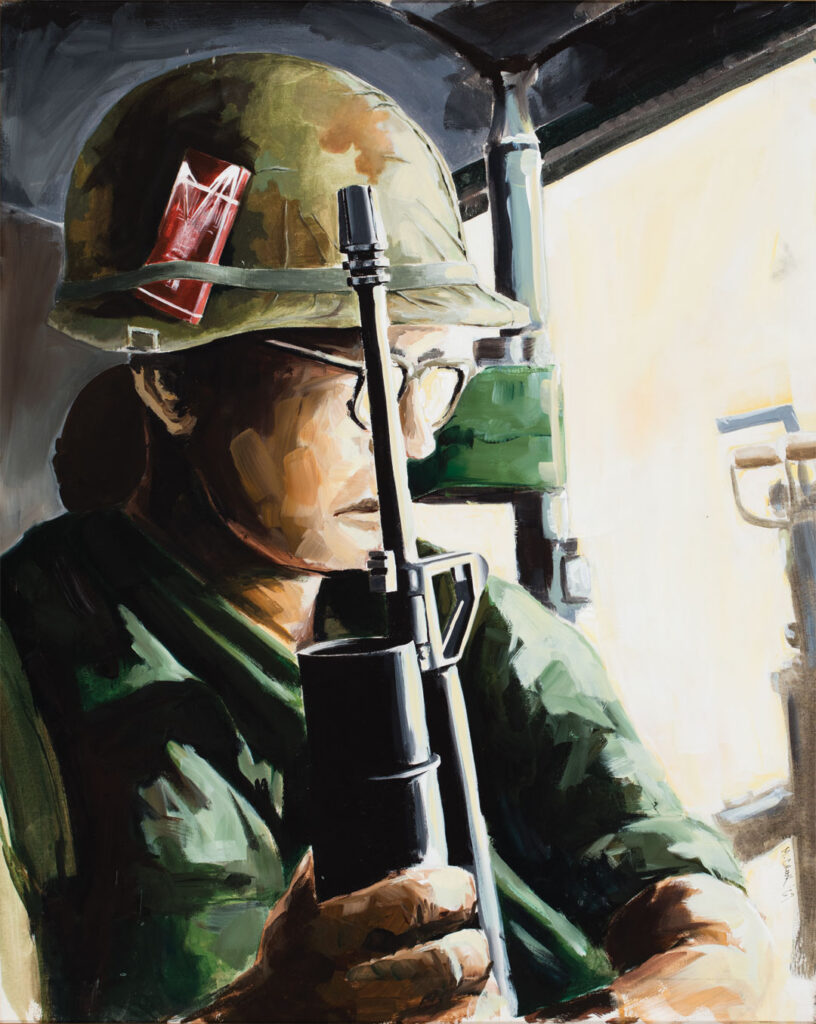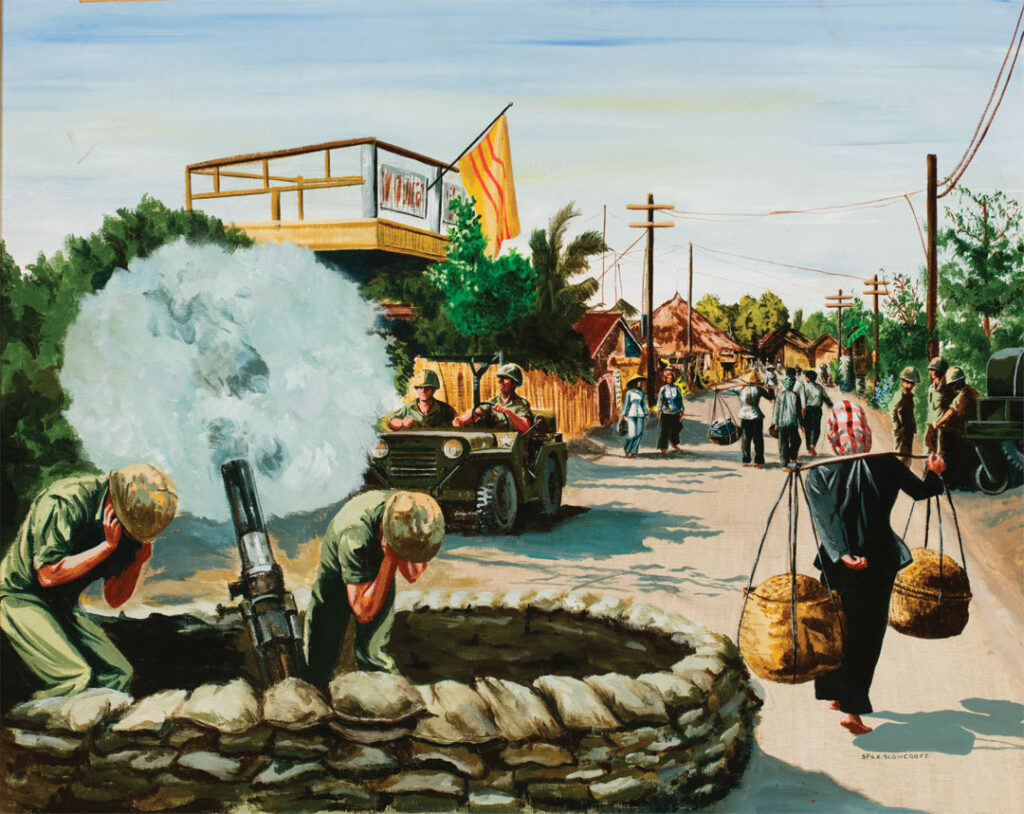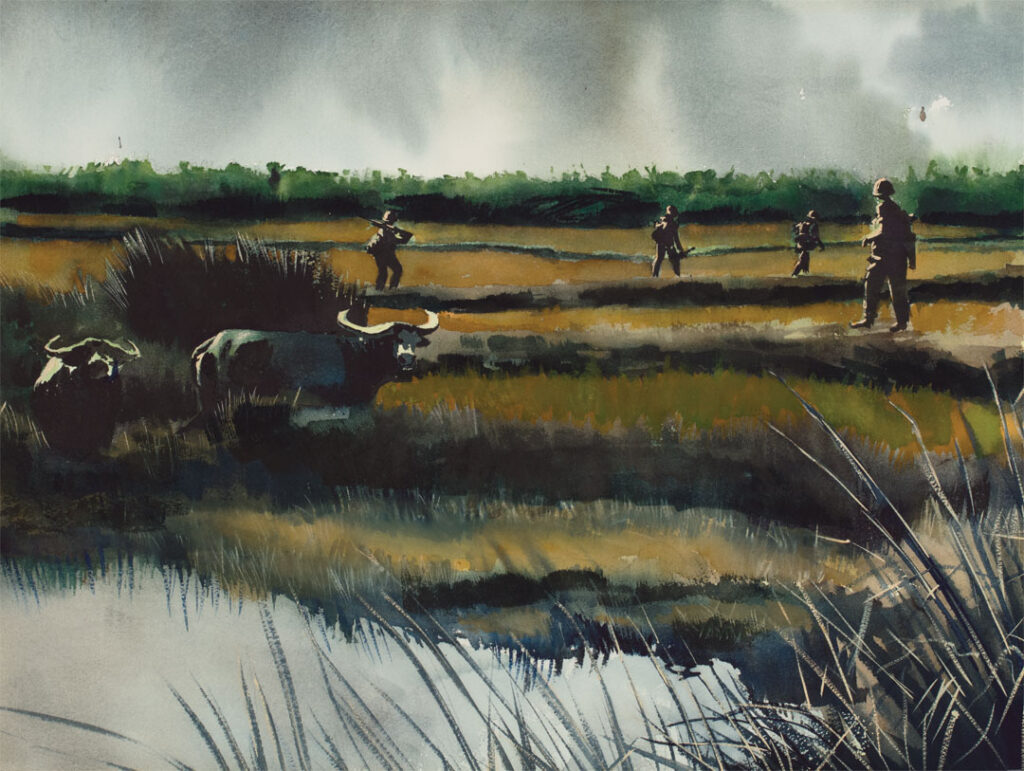Written By: Matthew J. Seelinger

As the war in Vietnam escalated in 1965 with the deployment of American combat troops, the Office of the Chief of Military History established the Combat Artist Team (CAT) program for soldier-artists to document the Army’s experiences in Southeast Asia. Launched in 1966, the program called for the Army’s Arts and Crafts Program to solicit applications from soldiers. Once soldier-artists were selected and team assignments made, the Army deployed CATs to Vietnam, with the Army providing logistical support.
The Army organized a total of nine CATs. Each team typically had five soldier-artists, plus a supervisor. Each CAT would spend sixty days in Vietnam gathering information and making preliminary sketches ranging from day-to-day activities and routine duties to combat operations. The team would then be transferred to Hawaii to complete their work.

The soldier-artists serving in the CATs were granted artistic freedom and encouraged to depict what they saw in Vietnam in their own individual styles. The artwork depicted here was created by CAT III, which was in Vietnam from February to June 1967. CAT III was comprised of Michael R. Crook, Dennis O. Magee, Robert T. Myers, Kenneth J. Scowcroft, and Stephen J. Sheldon, with supervisor C. Bruce Smyser. The artwork of CAT III and the other eight CATs is maintained in the Army Art Collection at the U.S. Army Center of Military History’s Museum Support Center at Fort Belvoir, Virginia. Future issues of On Point will feature the artwork of other CATs. Currently, nine pieces from various CATs are on display as part of The Art of Soldiering exhibition at the National Museum of the U.S. Army.

